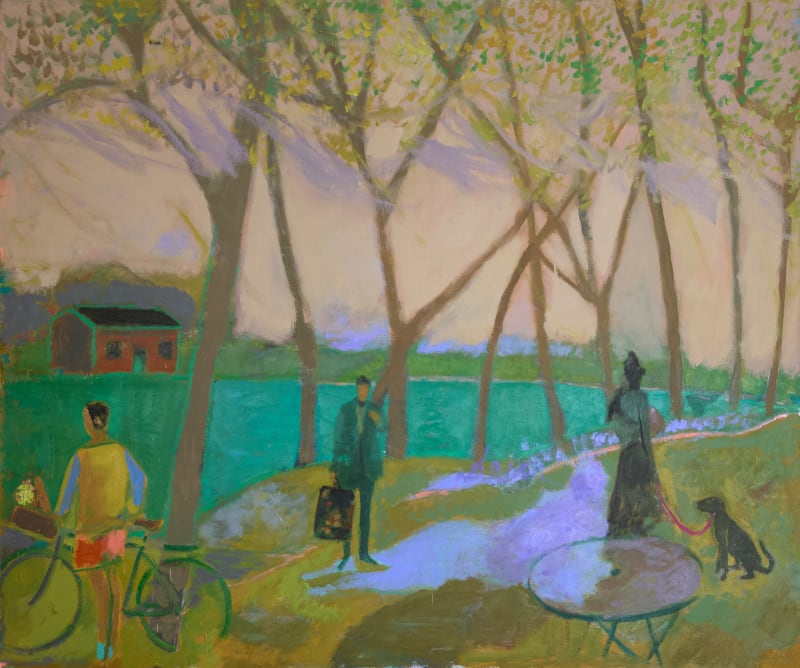I paint the picnic but I always include the wasp
My paintings begin often from a chain of visual associations, personal and collective, from sensations and from photography - often photography that documents the aspirational worlds of fashion, lifestyle and the demi -monde. These images provoke in me ambivalences that create an internal conflict of emotions - from this conflict is born a desire in me to paint and therefore sublimate these feelings into a painting that both honours and critiques the narratives of pleasure. The paintings aspire to a state of what the critic Michael Fried called “absorption” whereby the work invites the viewer to a form of deep looking and open-ended contemplation.
I often think of this as “cinematic’ , not in the sense of utilising stills from cinema, but in evoking the structure and atmosphere of the radiant, irrational spaces of cinema - games of temporal logic are suspended, attention is brought to fleeting visual forces. The paintings hold moments of duration - before things happen again after they occur. One of the key ideas of my work is the notion of the waking dream, the paintings unfold without fixed beginnings or endings, and with no vertical narrative - I am interested instead in the open-ended possibilities of a painting.
Colour is for me the primary vehicle of expression; colour is both material and psychological - it behaves like thought or memory, it’s elusive, layered, emotionally volatile - often on the point of combustion or collapse.
I do not think of drawing as the architecture for a coloured armature - colour is both the skin and the bone of the pictorial skeleton. Colours are characters - sometimes in conflict, sometimes in harmony, always relational. A soft pink might feel hesitant, a sharp yellow may be melancholy - the flash of recognitions - these associations operate under verbal language - more akin to music or the Jungian ‘collective unconscious” - understood by me as a realm of shared images and metaphors that painting and poetry can access. Colours are relational entities- the last consideration colour has in my work is the consideration of the aesthetic - colour has to work as expression or be replaced. .
Ezra Pound's idea of the poem as haiku , particularly “in a station of the metro “ is important to me.
“The apparition of these faces in the crowd / petals on a wet black bough "
This poem captures in bravura distilled economic poetics the ephemerality of the modern city; the fleeting encounter, the beauty and anonymity of strangers - people at rest - always ABSORBED.
The physical act of painting is crucial, I work as a director- setting up take after take - until the composition begins to finally build. I do not work from sketches or studies, the process is one of considered attrition.
The paintings are scraped back, altered and wiped away - each one a “take” heading towards the final 'performance'.
The canvas is a palimpsest - the final surface a testament that in the end nothing Is wasted in expression.
Ultimately, I am interested in the transformation of experiences - to follow an idea of dandyism developed by Baudelaire - the ‘immutable ephemeral’, the momentary made solid, the passing gesture held in coloured pigment - painting as luminous - painting as a way to hold time.
Painting is a torn receipt in the hand of a mysterious Muse.
~ Jonathan Schofield




